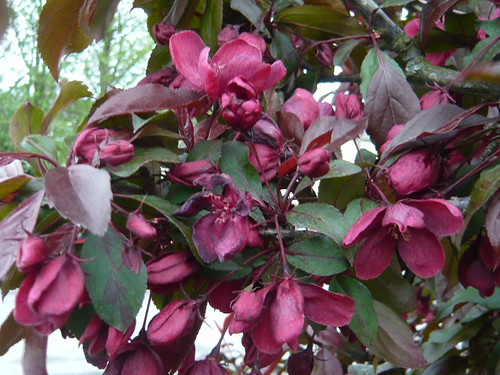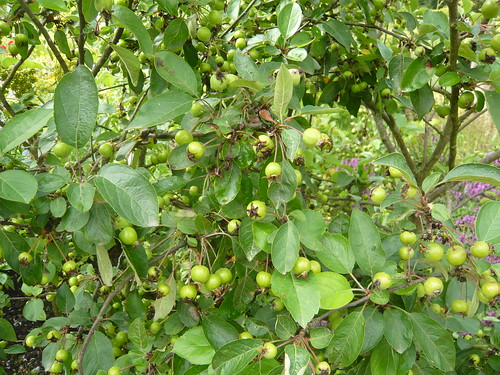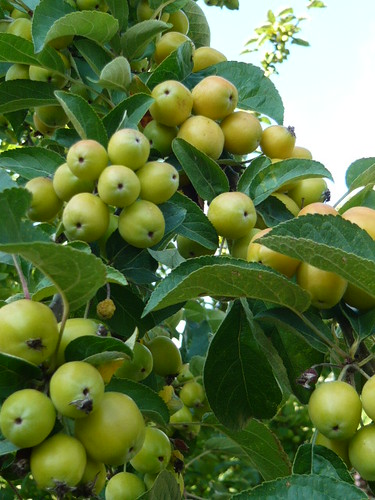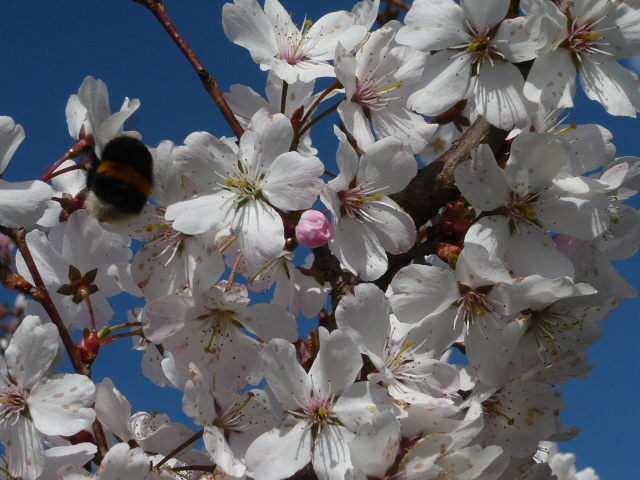
Crab Apple – Root and Branch Review
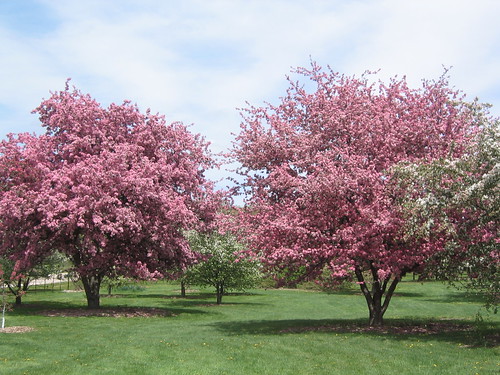
The common crab apple grows wild in hedgerows and woodlands of western Europe. It is also cultivated for the blossom and small crabapples.
Key Features of the Crab Apple
- Latin name – Malus sylvestris other common names include Wild apples, verjuice
- Height – 25-45 feet
- Type of tree – Deciduous –
- Leaves – Alternate, elliptical, toothed, dark glossy green.
- Flowers – Borne in clusters on short shoots. White tinged pink to deep red
- Fruit – Spherical green – yellowish- red pome or crabs up to 2 inch across. Crabapples are sour.
- Bark – Pale brown to grey when young, peeling flakes of grey brown as the tree matures
- Family – Rosaceae
Origins and Distribution of the Crab Apple
- Native to Europe.
- Used as an ornamental tree in temperate zones.
Uses and Attributes of the Crab Apple
- The hard, heavy, close grained wood was used to make clubs, handles and wedges.
- Crabapples are high in pectin and are used to make crabapple jelly.
- Traditionally the small yellow fruit were used to make ‘verjuice’ an acidic condiment.
- Crab Apple are used as root stock for grafting commercial apples.
- Crab apple trees make good pollinators for other apples in orchards.
- Apple wood is used in some smoking and burns with a sweet scent.
Gardeners Tips for the Crab Apple
- These ornamental trees are grown for their beautiful flowers and fruit.
- There are numerous cultivars most of which are good pollinators for apples and are known for their resistance to disease.
- Smaller crab apples like Evereste can be trained as cordons to make a multi-purpose wind break
Other types of Crab Apple and key species
- There are 30-40 species of Crab Apple in the genus.
- There are a large number of varieties and hybrids. Generally they have pinker flowers and larger fruit and have been selected for these reasons.
- ‘John Downie’ produce fruit that is large and tasty enough to eat fresh off the tree
- Malus sylvestris is the parent of orchard apple Malus domestica and several ornamental crabs.
Crab Apple comments from elsewhere
- The crab apple is the ancestor of the cultivated apple, over 6,000 varieties having been bred over the ages.
- For sheer flower power it’s hard to beat M. floribunda with red buds opening to pink then white blossom, followed by red and yellow fruit. A good choice where space is limited is Malus ‘Royal Beauty’, a weeping tree with reddish purple flowers, purple-bronze leaves and dark red fruit.
- Birds will feed on the fruit, particularly robins, starlings, greenfinches and thrushes and the colourful flowers will attract bees in spring. Additionally the native crab apple can be home to over 90 insect species. RSPB
Read about our series on British tree reviews with a bakers dozen fact sheets
Credits
Pink Crab Apple Blossoms by beautifulcataya CC BY-NC-ND 2.0

